
The Speed Graphic was a press camera produced by Graflex in Rochester, New York. Although the first Speed Graphic cameras were produced in 1912, production of later versions continued until 1973; with the most significant improvements occurring in 1947 with the introduction of the Pacemaker Speed Graphic.

Huỳnh Công Út, known professionally as Nick Ut, is a Vietnamese-American photographer who worked for the Associated Press (AP) in Los Angeles. He won both the 1973 Pulitzer Prize for Spot News Photography and the 1973 World Press Photo of the Year for "The Terror of War", depicting children running away from a napalm bombing attack during the Vietnam War.

The Toronto Island ferries connect the Toronto Islands in Lake Ontario to the mainland of Toronto, Ontario, Canada. The main city-operated ferry services carry passengers (all) and commercial vehicles (some) from the Jack Layton Ferry Terminal at the foot of Bay Street to three docks on the islands. Private motor vehicles are not carried. The ferry operated by PortsToronto carries passengers and vehicles to Billy Bishop Toronto City Airport on the island from the foot of Eireann Quay. Additional private ferries carry passengers to various island boat clubs. Ferry services to the islands began in 1833, and the Toronto Island Ferry Company began in 1883.

William James Topley was a Canadian photographer based in Ottawa, Ontario. He was the best known of Ottawa’s nineteenth-century photographers and the most socially prominent one. Topley was noted for his portraiture of Canadian politicians and was a business partner of William Notman, having taken over Notman's Ottawa studio in 1872. A large number of photographs by Topley are now in the collection of Library and Archives Canada, including approximately 150,000 glass plates negatives and a set of 66 index albums covering the entire history of his Ottawa studios from 1868 until 1923.

The Gibraltar Point Lighthouse is a lighthouse located on the Toronto Islands in Toronto, Ontario, Canada. Begun in 1808, it is the oldest existing lighthouse on the Great Lakes, and one of Toronto's oldest buildings. The lighthouse is perhaps best known for the demise of its first keeper, German-born John Paul Radelmüller, whose 1815 murder forms the basis of Toronto's most enduring ghost story. Recent research has verified many aspects of the traditional tale of his death and identified the soldiers charged with but ultimately acquitted of the crime.

Melvin Ormond Hammond, known professionally as M. O. Hammond, was a Canadian journalist, photographer, and author.
Larry Towell is a Canadian photographer, poet, and oral historian. Towell is known for his photographs of sites of political conflict in the Ukraine, Nicaragua, El Salvador, Standing Rock and Afghanistan, among others. In 1988, Towell became the first Canadian member of Magnum Photos.

Charles William Jefferys, also known as C. W. Jefferys, was a Canadian painter, illustrator, author, and teacher, best known as a historical illustrator.
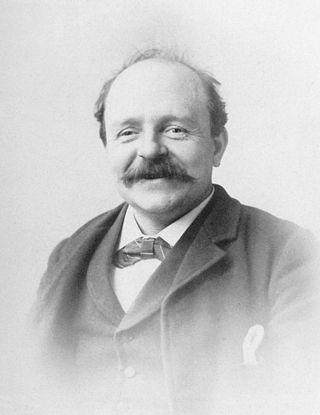
Frank William Micklethwaite (1849–1925) was a Canadian photographer, professionally known as F. W. Micklethwaite, whose photographs of Toronto and the Muskoka area form an important and unique photographic record of the province of Ontario's history in the late 19th century and early 20th century. Micklethwaite specialized in outside views and landscapes, as well as architectural and commercial photography, and he was one of Toronto's best known photographers.

William Barclay McMurrich was a Canadian lawyer and politician. He was the mayor of Toronto from 1881 to 1882. He was also a member of the Orange Order in Canada.
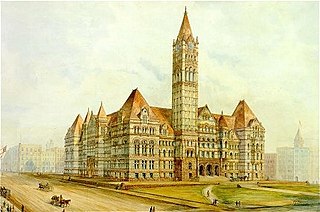
This timeline of the history of Toronto documents all events that occurred in Toronto, Ontario, Canada, including historical events in the former cities of East York, Etobicoke, North York, Toronto, Scarborough, and York. Events date back to the early-17th century and continue until the present in chronological order. The timeline also includes events taken place in municipalities bordering Toronto.
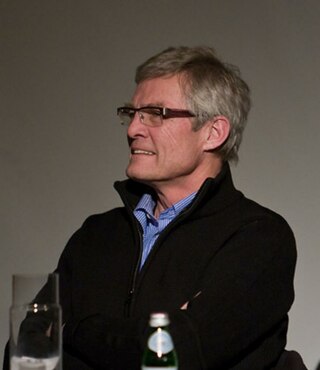
John O'Brian is an art historian, writer, and curator. He is best known for his books on modern art, including Clement Greenberg: The Collected Essays and Criticism, one of TheNew York Times “Notable Books of the Year” in 1986, and for his exhibitions on nuclear photography such as Camera Atomica, organized for the Art Gallery of Ontario in 2015. Camera Atomica was the first comprehensive exhibition on postwar nuclear photography. From 1987-2017 he taught at the University of British Columbia, Vancouver, where he held the Brenda & David McLean Chair in Canadian Studies (2008-11) and was an associate of the Peter Wall Institute for Advanced Studies. O’Brian has been a critic of neoconservative policies since the start of the Culture Wars in the 1980s. He is a recipient of the Thakore Award in Human Rights and Peace Studies from Simon Fraser University.
Bruce West was a Canadian newspaper journalist and author. He was a columnist from the 1930s until the 1970s.
Sam Tata was a photographer and photojournalist.

William James was an early and prolific photographer who chronicled Toronto, Ontario. His works have been widely collected and republished. James came to Canada, from England, in 1906, when he was forty years old. He made freelance photography his occupation in 1909, and was the founding President of the Canadian Photographers Association.
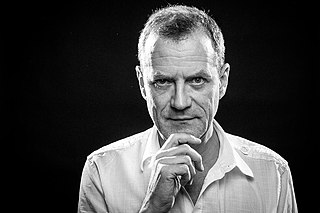
Michael Willems is a Canadian photographer and photography educator who was born in the Netherlands. He is known mainly for his daily teaching blog, and for his photo series, Contact 2009 exhibit, and book "IV – Intravenous", the story of two Toronto drug users who beat their addiction.
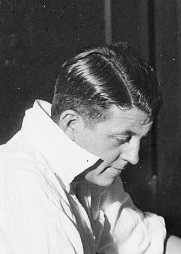
John Boyd, also referred to as John Boyd Sr., was a Canadian amateur photographer and railway official. He was also the father of Canadian newspaper photographer John H. Boyd.
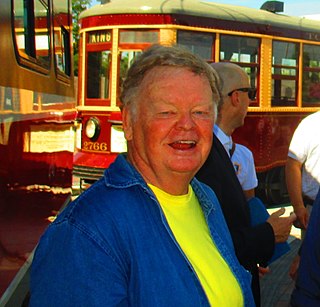
Mike Filey was a Canadian historian, radio host, journalist and author. He was awarded the Jean Hibbert Memorial Award in 2009 for promoting the city of Toronto and its history.

The Queen's Hotel was a large hotel, in Toronto, Ontario, located on the north side of Front Street, between Bay and York streets - the current site of the Royal York Hotel. In 1927 Canadian Pacific Railways acquired the Queen's Hotel, across the street from the newly opened Union Station, so it could demolish it, and build a larger hotel.

Photographs have been taken in the area now known as Canada since 1839, by both amateurs and professionals. In the 19th century, commercial photography focussed on portraiture. But professional photographers were also involved in political and anthropological projects: they were brought along on expeditions to Western Canada and were engaged to document Indigenous peoples in Canada by government agencies.

















